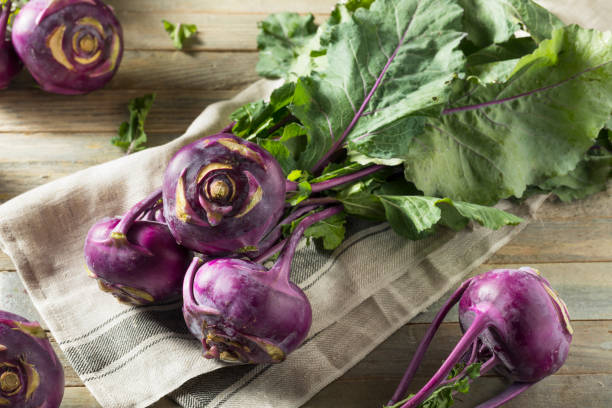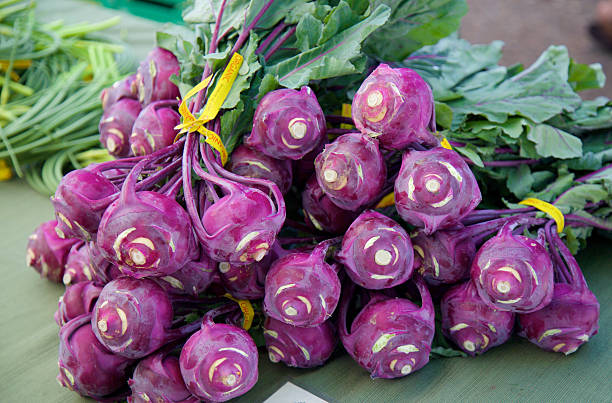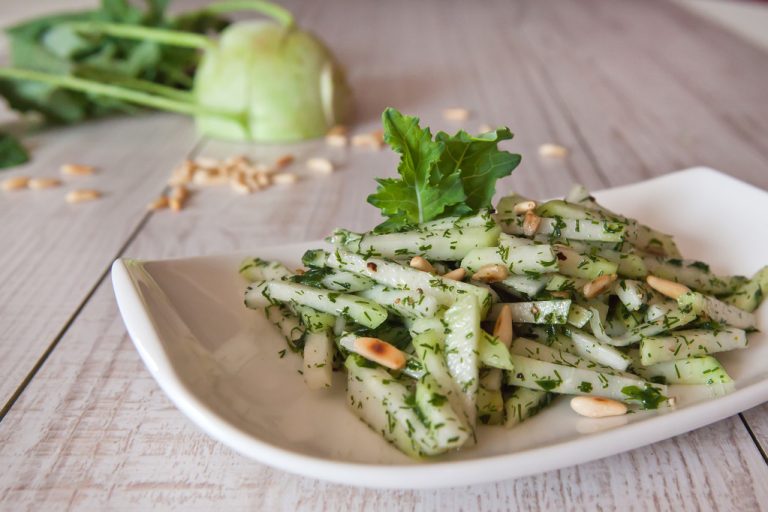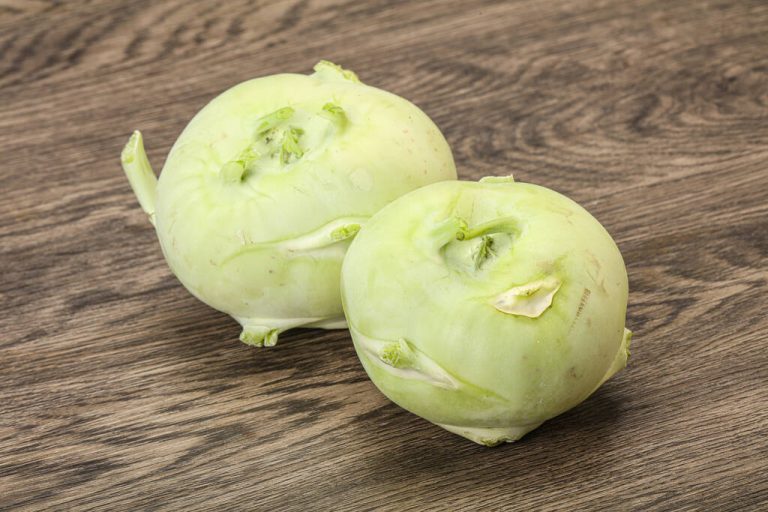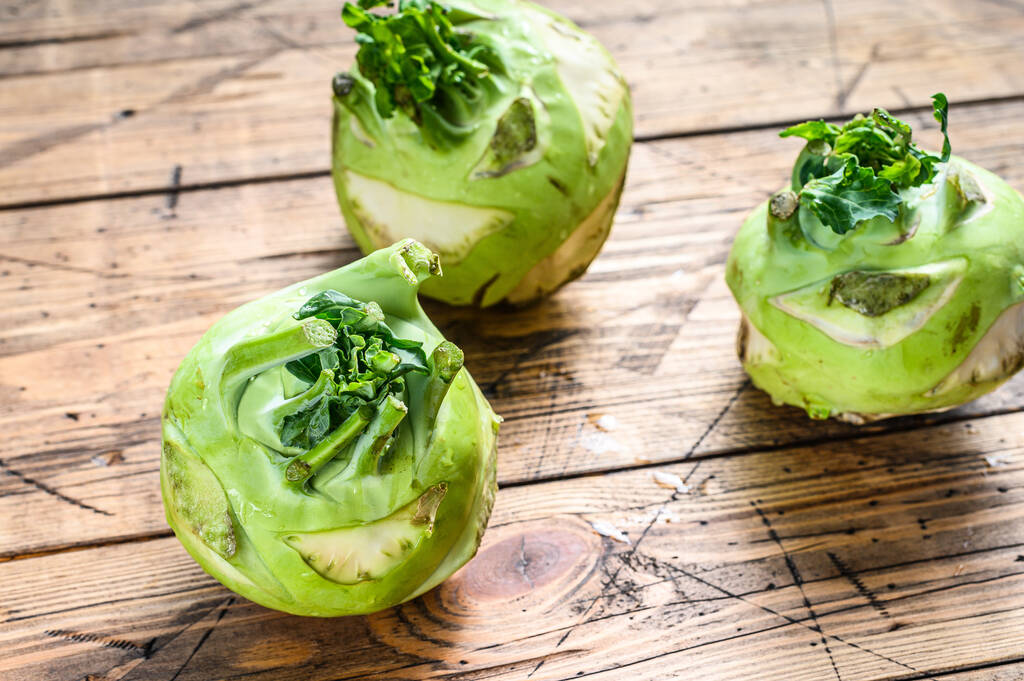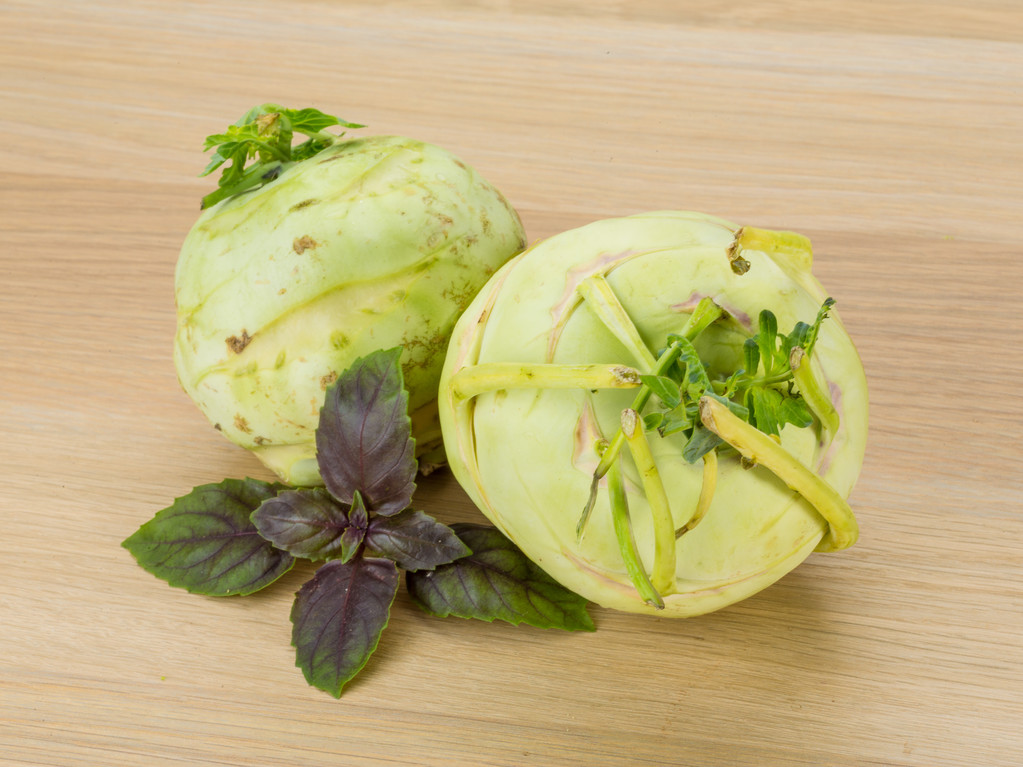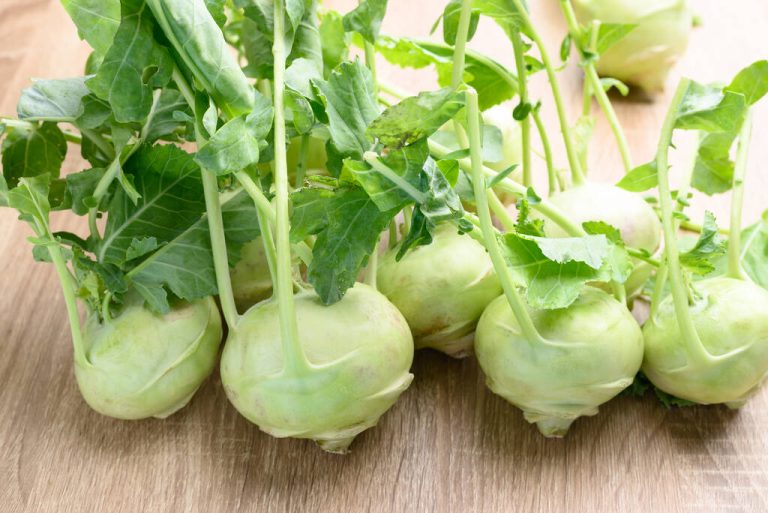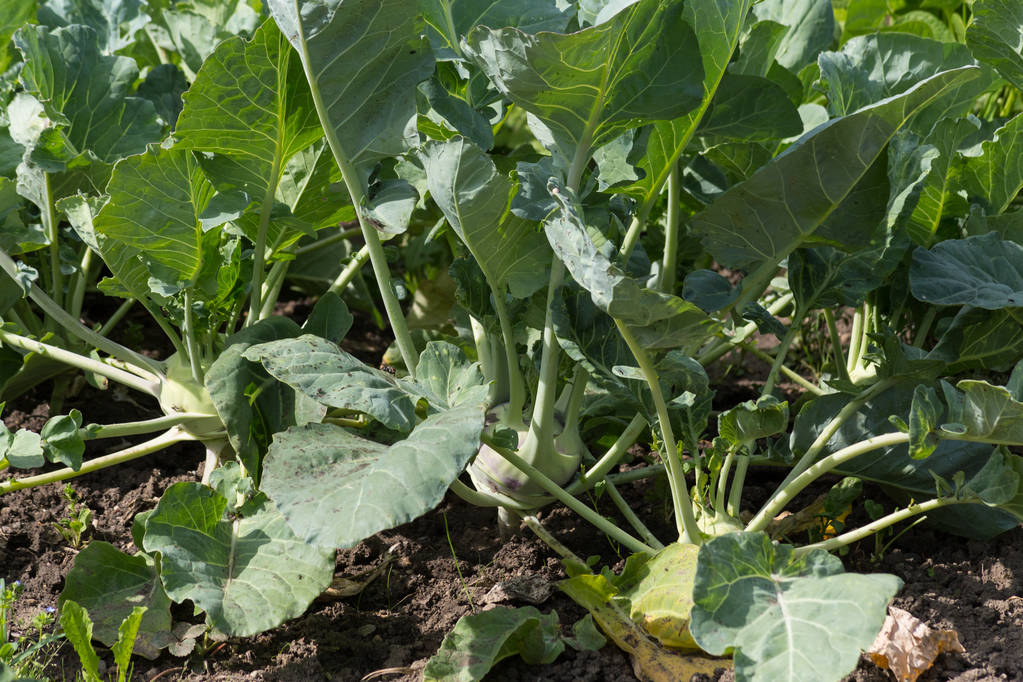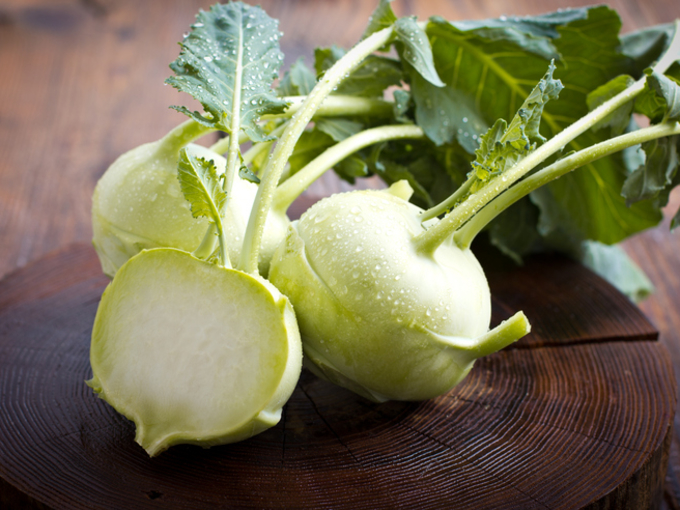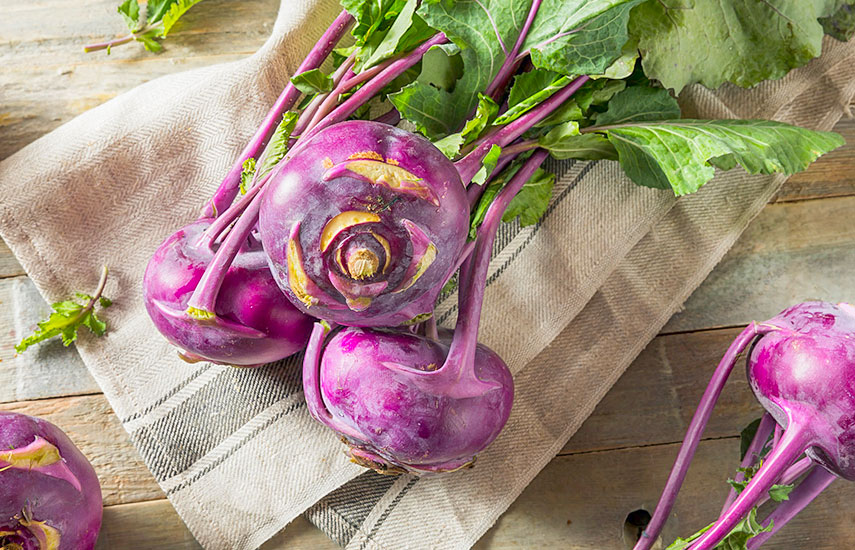Eat kohlrabi raw – it tastes good and is healthy. Some even prefer raw kohlrabi to cooked. We have summarized the most important information for you.
You can safely eat kohlrabi raw. Kohlrabi is actually particularly healthy raw. Although the green-whitish tuber is available all year round, it is actually only in season from May to October. Only then will you get them from regional cultivation. The remaining months the vegetables come from Italy or Spain.
Due to the high amounts of CO2 emissions that arise during long transport routes, it makes sense from an ecological perspective to buy kohlrabi as seasonally and regionally as possible. The rest of the year you can use other vegetables. You can find out when which fruit and vegetables are in season in our seasonal calendar.
Eating kohlrabi raw: these are the advantages

Kohlrabi tastes mild and slightly sweet and sometimes has a nutty aroma. The tuber contains a lot of water and is rich in vitamins and minerals. Kohlrabi is particularly rich in vitamin C, potassium, calcium, phosphorus and magnesium.
You can benefit from all these nutrients especially if you eat kohlrabi raw. Some micronutrients are destroyed during cooking because they are heat-sensitive or water-soluble. That’s why other vegetables are even healthier if you eat them raw. You can find out more about this here: You should rather eat these 6 types of vegetables raw
Kohlrabi has very few calories: the tuber contains about 27 kilocalories per 100 grams. It also consists of about six percent carbohydrates. Protein and fat are only present in negligibly small amounts.
By the way: did you know that you can use the kohlrabi leaves? Read more about this in our article Kohlrabi leaves: The leaves are so tasty to use The leaves contain a lot of vitamin C – even more than the tuber itself.
Eating kohlrabi raw: tips for preparation

You can always eat kohlrabi raw. If the leaves are intensely green and not wilted, the tuber is still particularly fresh and aromatic. But even cabbage with slightly wilted leaves is usually still edible. However, you should consume it promptly.
Basically, it is advisable to remove the stalks and leaves immediately after buying, as they remove moisture from the kohlrabi. You can then prepare the leaves immediately or store them separately in the fridge. Tip: If you wrap kohlrabi in a damp cloth and store it in the fridge, it will last a little longer.
You can eat the kohlrabi bowl with it. It is not poisonous, but often tastes quite bitter and is sometimes woody. This should tend to be less the case with smaller tubers. Depending on the variety, the shell can also be quite hard, making it difficult to chew.
When buying, you should use organically grown kohlrabi if possible. In this way you support sustainable agriculture that complies with ecological standards in cultivation and production and, in particular, avoids the use of chemical-synthetic pesticides.
